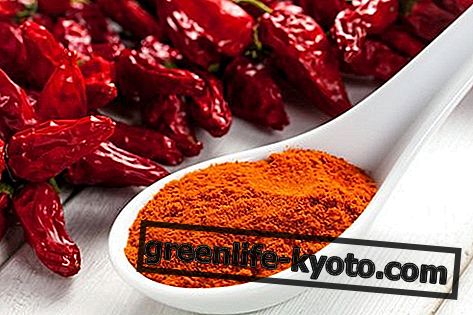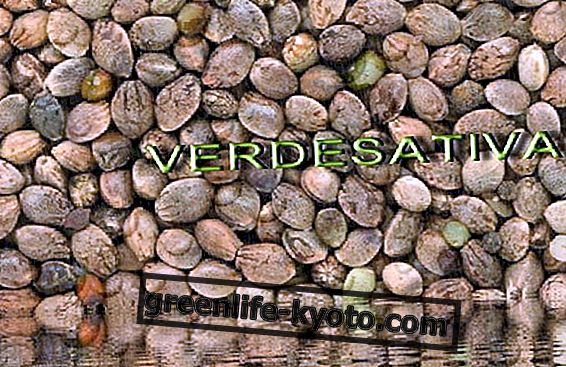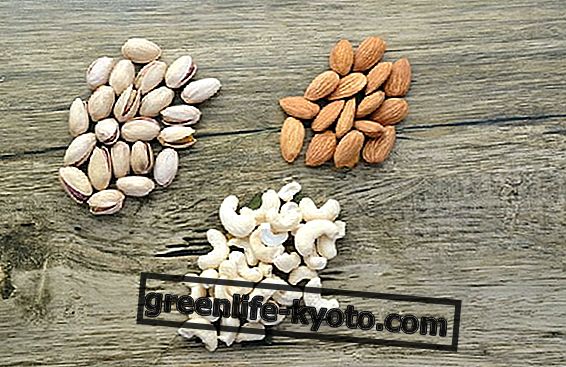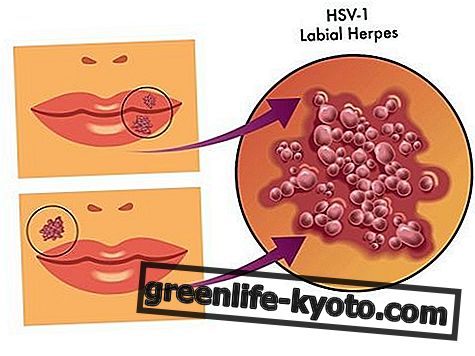Anorexia is a eating behavior disorder (DAC) that often affects a mostly female target in the adolescent phase. It is also counted among the psychogenesis eating disorders (DAP) . Let's find out better.
>
>
>
>

The altered relationship with food starts from a psychic base and also affects glands, organs and viscera. Those who are in anorexia condition can move into another type of DAP quite easily, as in the case of bulimia nervosa, binge eating disorder, obesity, pecking.
Symptoms of anorexia
The word anorexia identifies the symptom to all effects, while the disease is categorized as anorexia nervosa and refers to a pathological state of the individual who refuses food and has the obsessive fear of gaining weight. Malnutrition, starvation and amenorrhea develop in the most severe forms of the disease.
The most obvious symptom is a weight below 85% of that expected based on age and height and / or body mass index - BMI - less than 15.5). The fear of gaining weight, even in underweight subjects, is expressed continuously. Words often reveal anorexia; from the subjects' speeches an excessive importance is given to the weight at the expense of self-esteem. Amenorrhea for at least three consecutive cycles is another symptom.
Anxiety and depression are linked to the most obvious symptoms of a state tending to anorexia nervosa.
At dermatological level skin xerosis, gingivitis, fragility of hair and nails, acne, cheilitis can occur .
How to recognize and address eating disorders in children
Causes
The disorder has an origin often linked to the family situation, along with a genetic predisposition . The nutritional conditions are closely linked to the love that is received and to the forms of deprivation of the same.
Diagnosis
To carry out the diagnosis, there are no specific tests but questionnaires that the person completes.
Between these:
- Eating Attitudes Test, (EAT-26) a questionnaire consisting of 26 questions, to control diet-related disorders;
- Eating Disorder Symptom Severity Scale, (EDS3) to study the symptoms that accompany anorexia: the concern of the image of one's body;
- Eating Disorders Symptom Impact Scale (EDSIS), of recent design, examines nutrition, personal behavior and social isolation.
Diagnosis may indicate, as related symptoms, decreased bone mineral density, decreased sexual desire, hypoglycemia, the appearance of dental caries or various forms of chronic pancreatitis. Personality disorders and obsessive compulsive disorder can also be diagnosed.
The diagnosis can bring about changes in the heart, such as bradycardia in the event of significant and sudden weight loss.
The diagnosis may highlight membership in one of two subtypes of anorexia nervosa:
- Type with compulsive / self-liberating feeding if he shows behaviors such as self-induced vomiting, exaggerated use of laxatives, diuretics, enemas;
- Restrictive type, which do not have these elements.
Studies have shown that the first type can usually concern victims of physical or sexual abuse often on the part of the father. In both forms alcohol abuse was found by the father.
CARE FOR ANORESSIA
Therapy proceeds through a psychotherapeutic process that can also involve family members, in addition to the anorexic subject. We also recommend the support of Olympic figures who know how to bring the subject back to a deep contact with breathing, which reconnects to his own existence. The healing path is often hindered by the anorexic subject, who refuses any kind of help and therapy.
Supply
The combined support of an expert on the subject of nutrition and a figure engaged on the psychological front is aimed at bringing the body back to the conditions of minimum subsistence. For this reason the diet is studied on the individual but still aims to bring the subject back to an introduction level in the body equal to 1500 kcal per day. Long-term results cannot be obtained from food; it is necessary to work on the perception that the subject has of his own image.
The diet will lead to re-establishing a neutral contact with food, and psychological support will go hand in hand, as the anorexic state is linked to the difficulty in experimenting and developing interpersonal control towards significant figures of reference (in particular parents) . In many cases it is linked to the lack of possibility, especially in the early stages of psychological development, to experience what in psychology is defined as a "sense of volition" or the feeling of being us, with behaviors and thoughts, to condition events.
Herbal remedies for anorexia
Artemisia Vulgaris is the friendly plant of the thin, demineralized woman and acts positively in case of amenorrhea due to estrogen deficiency.
Sativa oat acts at all levels of the endocrine system, in particular it promotes estrogen secretion. The Ballota Fetida (also known as Black Marrubio ) is indicated for the subject that manifests paradoxical and contradictory behaviors.
Nettle is known for its antiatomic and remineralizing properties.
The horsetail (or Coda cavallina) is a mineralizing with trophic action on the adrenal cortex. Lemon balm acts on mood and depressive states related to self perception.
You can explore all the uses and benefits of lemon balm

Bach flowers for anorexia
Bach flowers act very well in case of a dysfunctional relationship with food. Obviously the intention should be strong and the commitment is not indifferent. Habit is the enemy of change.
Walnut helps in the transition, in the transition and is especially useful in the initial phase. A possible association is with Centaury, useful for strengthening intentions, dealing with feelings of guilt and weakness.
Cherry plum rebalances, acts in cases of self-destruction, in this case through the dysfunctional relationship with food. In some cases it is associated with Red Chestnut and Mimulus .
Traditional Chinese Medicine
First of all it is necessary to specify that among the 7 orifices classified by Chinese medicine, the mouth, closely connected to this disorder, represents our interaction with the world, it is our historical memory.
Anorexia treatment is extremely complex. Often one must resort to family therapy, or cognitive behavioral psychotherapy, even if only 30-50% of patients recover. We report the recent theories of Sing Lee, a Chinese psychiatrist who proposes a new interpretation of anorexia. Lee's studies show that Chinese anorexics do not justify their malaise with the fear of gaining weight, as Western patients do, but simply refuse food, citing general abdominal swelling and lump in the throat as justification. According to Lee the negative emotions of women reflect on the abdominal area by virtue of the visceral nourishment-energy relationship of women.
The study proposes acupuncture and Chinese massage as a treatment for anorexia nervosa.
The aim of the pilot study, randomized and controlled, was to evaluate the feasibility, safety and efficacy of the use of acupuncture, acupressure and massage for the treatment of mental anorexia. The study was conducted in a private medical facility in Sydney, Australia, on 26 patients. The treatment was performed twice a week for the first 3 weeks, then once a week for three weeks. The intervention group was treated with acupuncture in the points LI4- Hegu, ST36- Zusanli, PC6- Neiguan, LR3- Taichong, GB34- Yanglingquan, and points in relation to the syndrome according to Traditional Chinese Medicine. The control group was treated with massage and acupressure on the same points, using the Hetuifa technique.
Clinical data were measured at the beginning and 6 weeks after completion of the treatment. The primary outcome was the body mass index (BMI), secondary outcomes were eating disorders, anxiety and depression, self-perception.
23% of the patients left the study; based on the studies conducted on the rest it emerged that acupuncture, acupressure and massage can improve the subjective feeling of well-being of anorexic patients, even if further research is needed to confirm it.
Homeopathy
Among the often recommended homeopathic remedies, after the right time to embody the nature and nuances of the disorder, we find: Silicea, Amber Grisea, Natrum Muriaticum, Sepia, Kali Phosphoricum, Abronatum, Iodum, Crocus Sativus.
Ignatia is useful in the initial forms of anorexia-bulimia especially if both spontaneous and self-induced vomiting is present. Dosage 30 gtt. of TM twice a day for about two months.
Exercises and movement in case of anorexia
When the relationship with food is altered, an unbalanced perception of the movement that the body needs is usually observed. It occurs with some frequency that, together with the obsession with food, there is also a certain anxiety about the performance required of the body. Gym, courses, forced outdoor outings even when the body requires rest.
Yoga and tai chi can be an excellent key to return to the breath, to the necessary calm, to feel.
Sport in a more western key can actually help a lot in the most delicate cases where there is risk of muscular atrophy and loss of tone in tissues of those suffering from eating disorders. Physical recovery, when it passes through physical activity, acts on the sensation of being "sick" and on the reconquest of physical space.
Dance music therapy can also be very useful.













